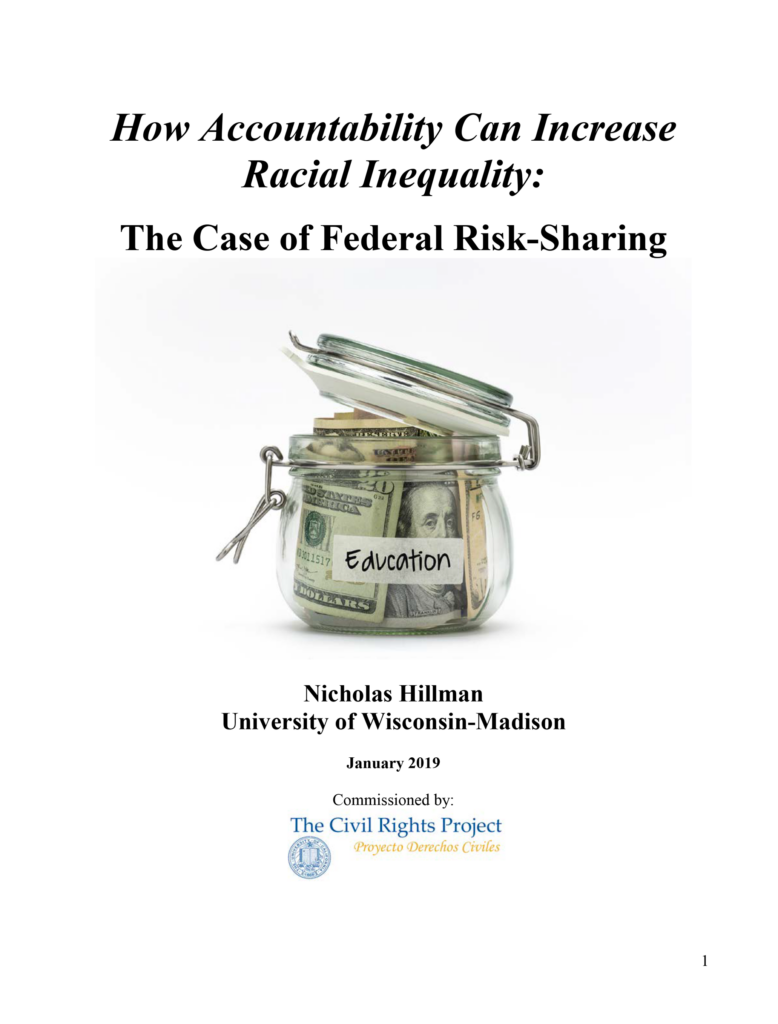Main Point:
- Since both colleges and students have very different resources and starting points, good policy should strengthen the ability of campuses and students to succeed and not punish them for taking important chances despite limited resources and greater challenges.
- Policymakers are interested in using student loan repayment rates as an accountability metric for colleges. But applying an overly simplistic accountability metric that fails to account for these differences is likely to reinforce existing inequalities.
Findings:
- Using College Scorecard data, this paper finds federal risk-sharing policies based on loan repayment rates—even if well-intended—are likely to reinforce racial and economic inequality.
- High repayment rate colleges disproportionately enroll white students and those whose average family income is nearly four times larger than the low repayment rate colleges ($87,350 versus $18,790, respectively).
- Three in four of the nation’s lowest repayment rate colleges are for-profit institutions.
- Approximately one in three Historically Black College and Universities (HBCUs) and Predominantly Black Institutions (PBIs) are in the group of colleges with the lowest repayment rates.
- Colleges charging high net price, and those where large shares of students borrow or are first-generation, have lower repayment rates.
Recommendation:
- The paper offers policy alternatives that would promote equity-based accountability through very different policy instruments including: performance development grants, need-based aid for colleges, comprehensive repayment outreach, and technical assistance labs.
This paper was presented at the briefing, Are Current Policy Changes Closing the Door to College for Students of Color?
In compliance with the UC Open Access Policy, this report has been made available on eScholarship:


